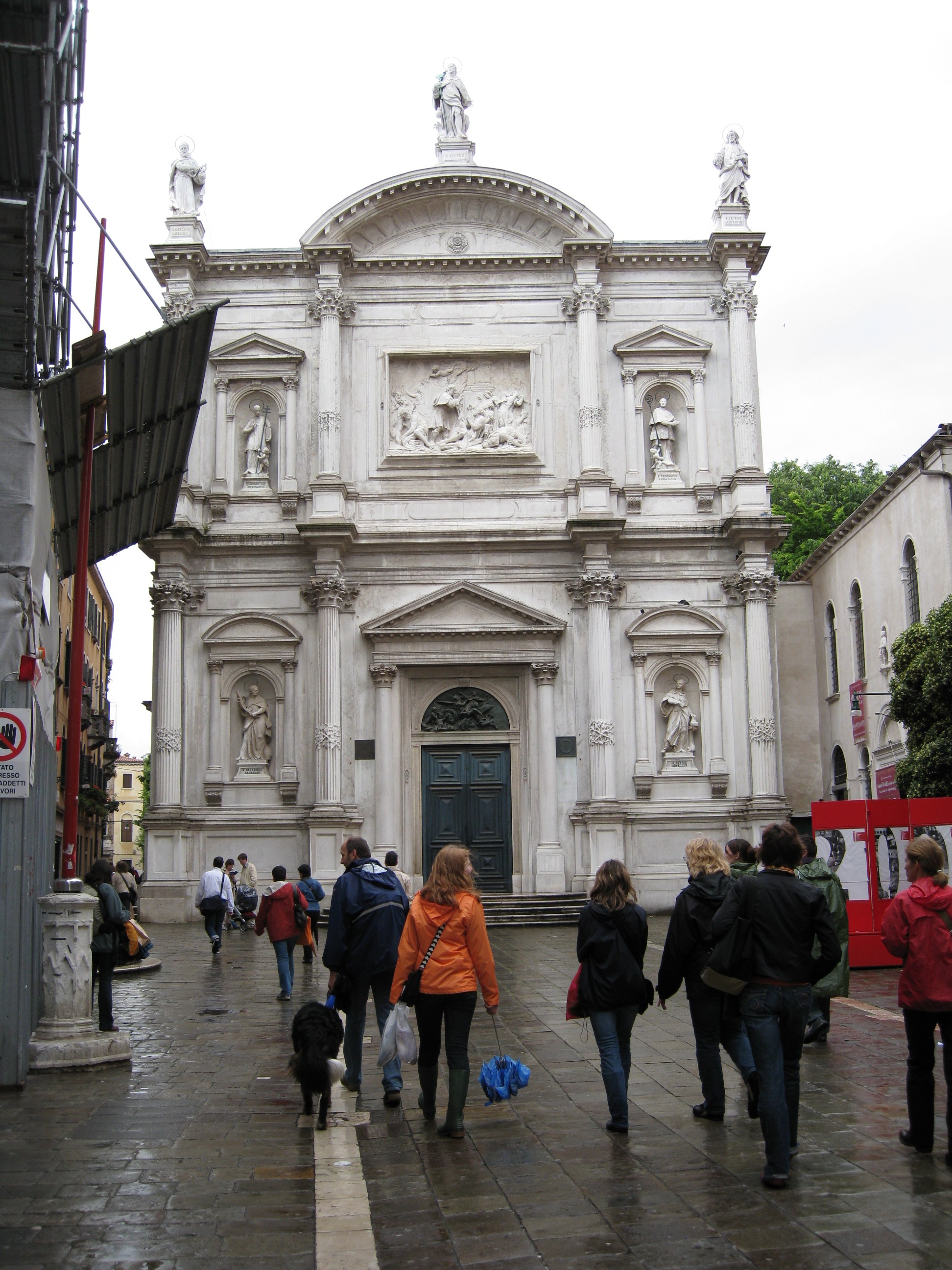CATHEDRAL QUEST
Our quest to experience the great cathedrals and churches of Europe
Day 14
Tuesday, May 20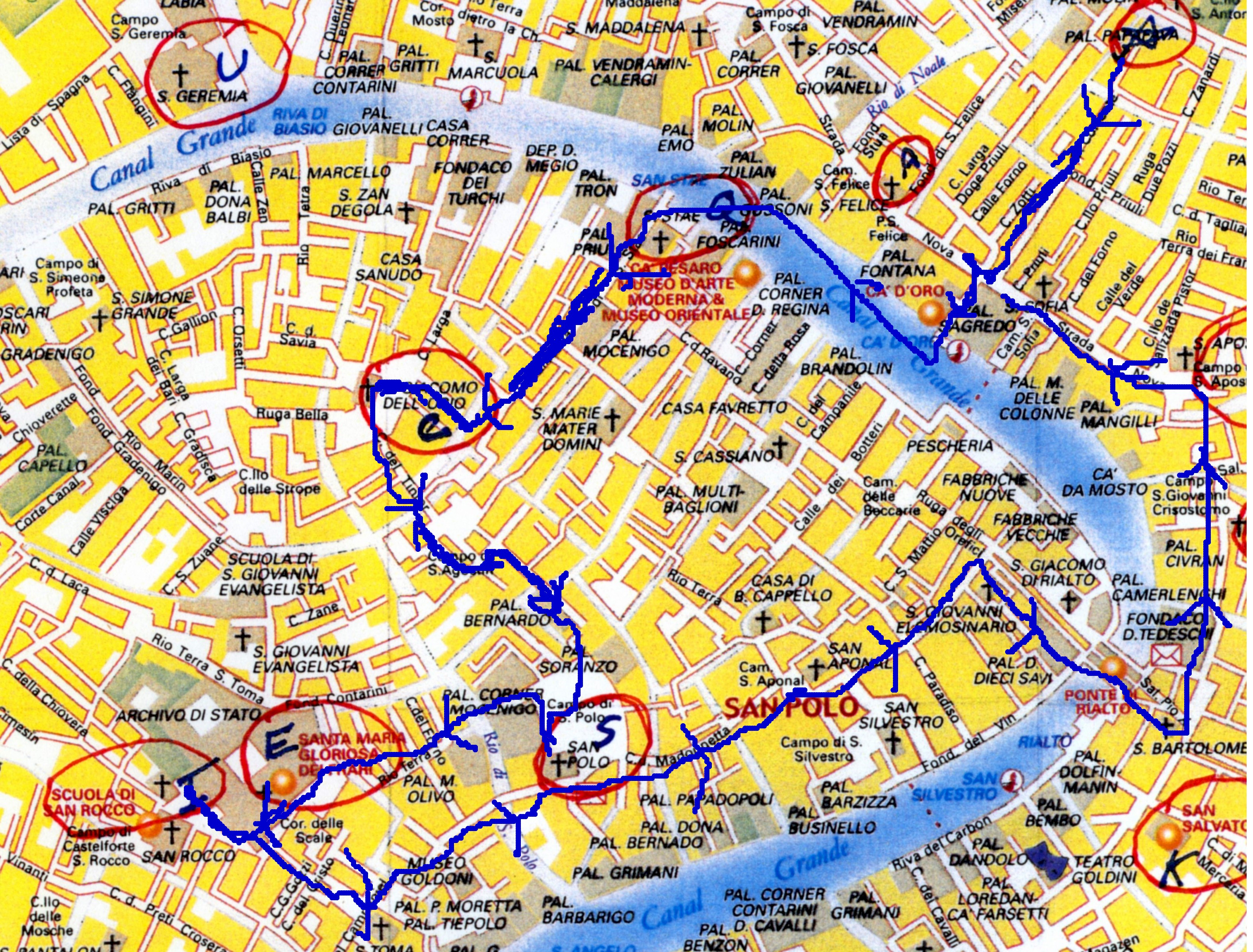
VENICE
We slept this morning until 8:00. It was raining hard. We decided we needed to do the wash, as we had a washer/dryer in the apartment, but we didn’t have any detergent. I walked to the grocery—getting to be an old hand at going to the grocery store. I got the detergent and some beautiful fresh strawberries. We did the washing and read. We ate lunch at home – ham and cheese sandwiches and a little chicken ravioli from the other night.
It was still raining
some but we decided to go out anyway. We
took the vaporetto in the opposite dire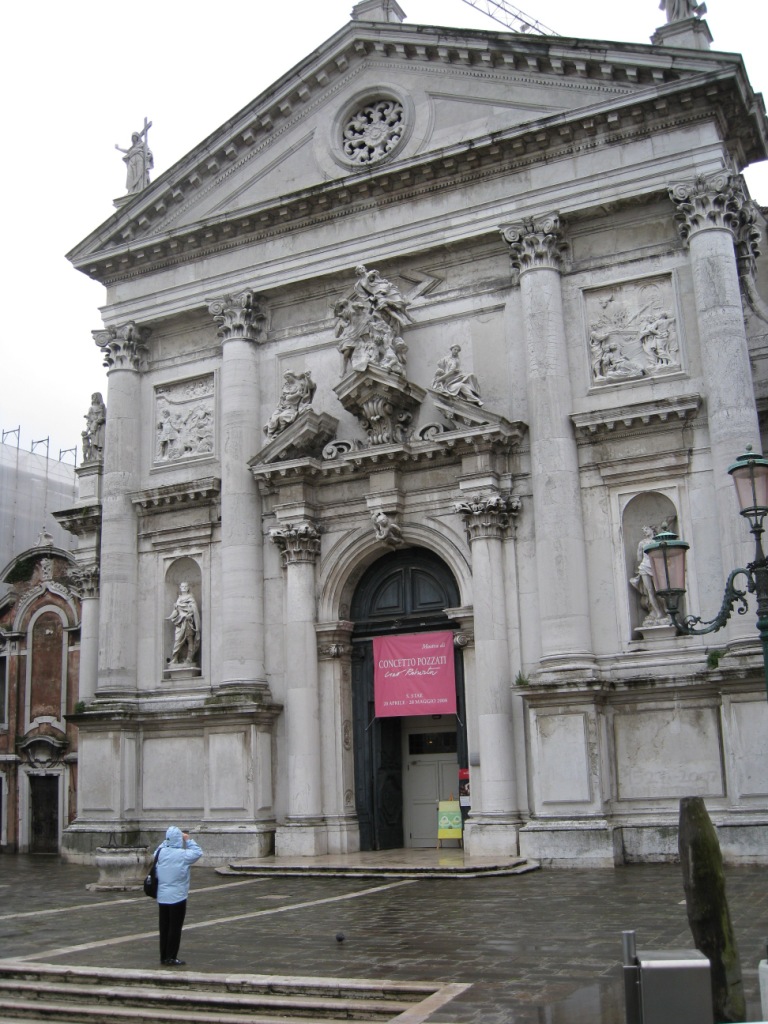 ction – towards the train station and
got off at the next stop – S
ction – towards the train station and
got off at the next stop – S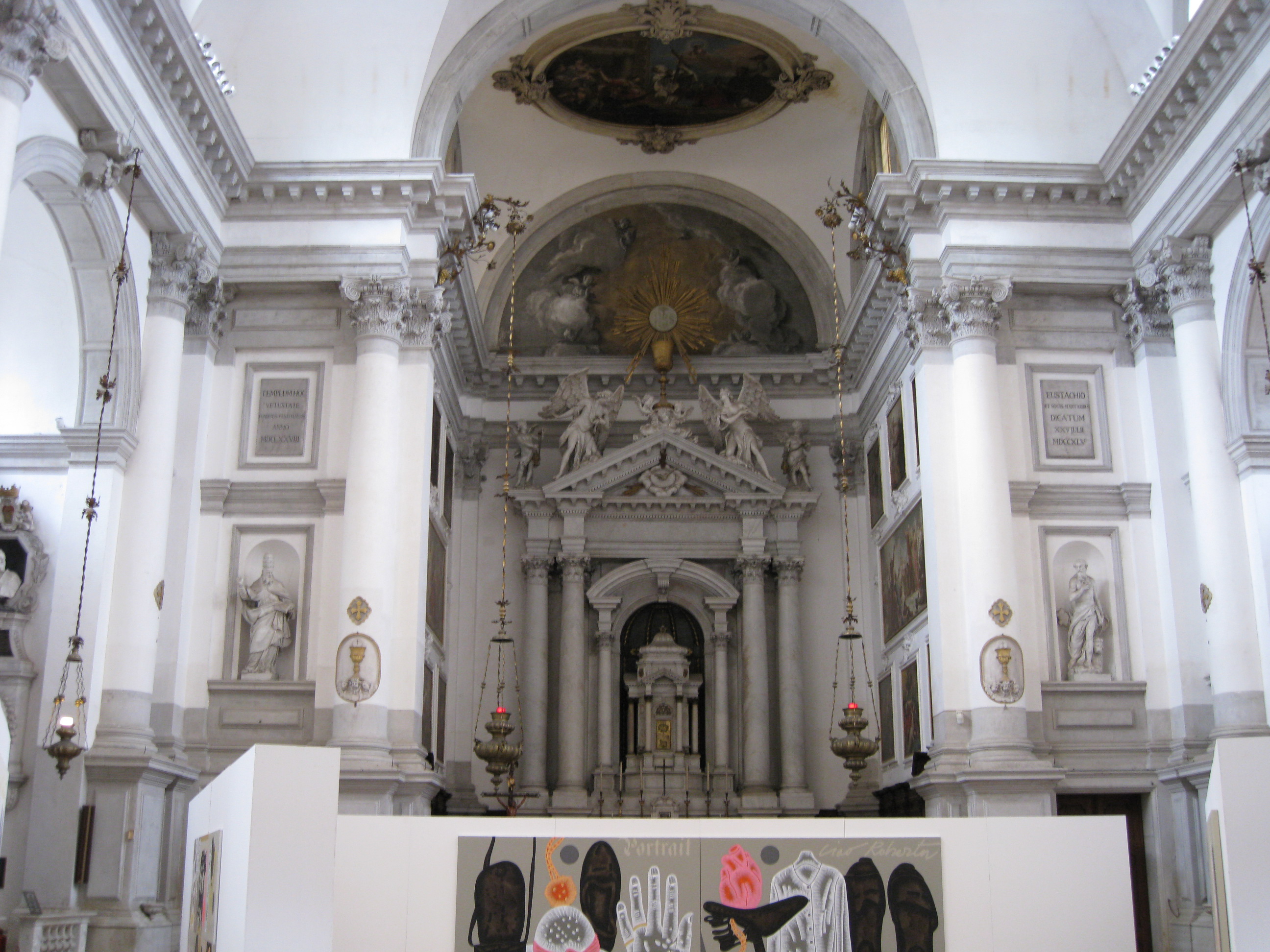 t.
Stae
("Q" on the map).
St. Stae church was right there.
It was built in
1704 and restored in 1977 and was now an art center.
The façade was a Palladio style although
Palladio didn't design it. We went in and found it all
partitioned off by
works of art….mostly modern. It was a very
Baroque church on the interior. At the altar end were a number of
large paintings on the side walls.
t.
Stae
("Q" on the map).
St. Stae church was right there.
It was built in
1704 and restored in 1977 and was now an art center.
The façade was a Palladio style although
Palladio didn't design it. We went in and found it all
partitioned off by
works of art….mostly modern. It was a very
Baroque church on the interior. At the altar end were a number of
large paintings on the side walls.
This area of
Venice is known as San Polo. From
St. Stae we started walking mor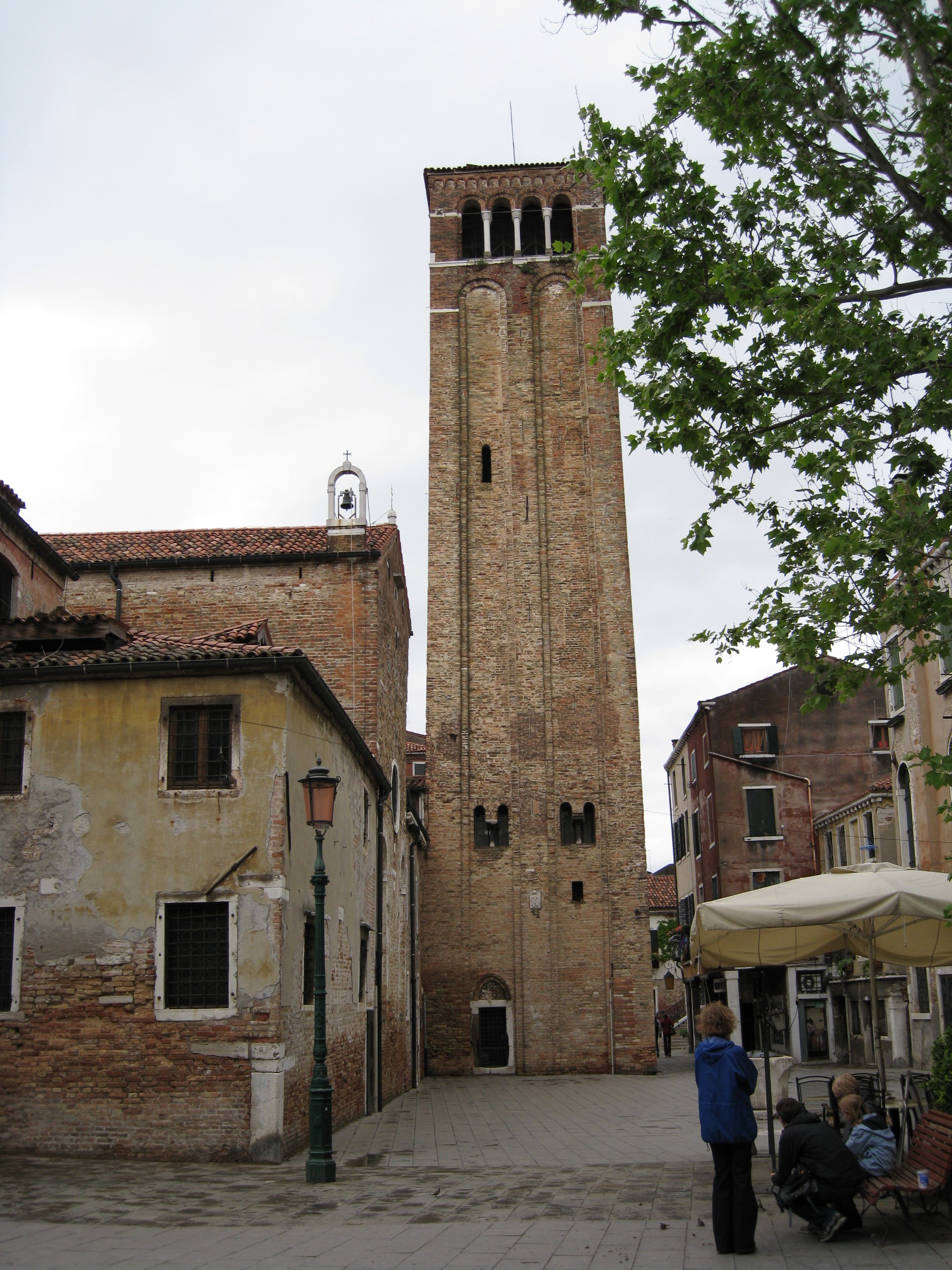 e into the San Polo area.
For those who follow the Donna Leon mysteries this is the
ar
e into the San Polo area.
For those who follow the Donna Leon mysteries this is the
ar ea in which
Inspector Brunetti lives. Our first stop was S.
Giacomo dell Orio ("C"
on the Map). It was
founded in the 9th century and rebuilt in 1225.
It was a mixture of various periods.
ea in which
Inspector Brunetti lives. Our first stop was S.
Giacomo dell Orio ("C"
on the Map). It was
founded in the 9th century and rebuilt in 1225.
It was a mixture of various periods.
The ceiling
of the nave was Gothic
ship’s keel roof. It had wood cross beams and the ceiling itself was
individual squ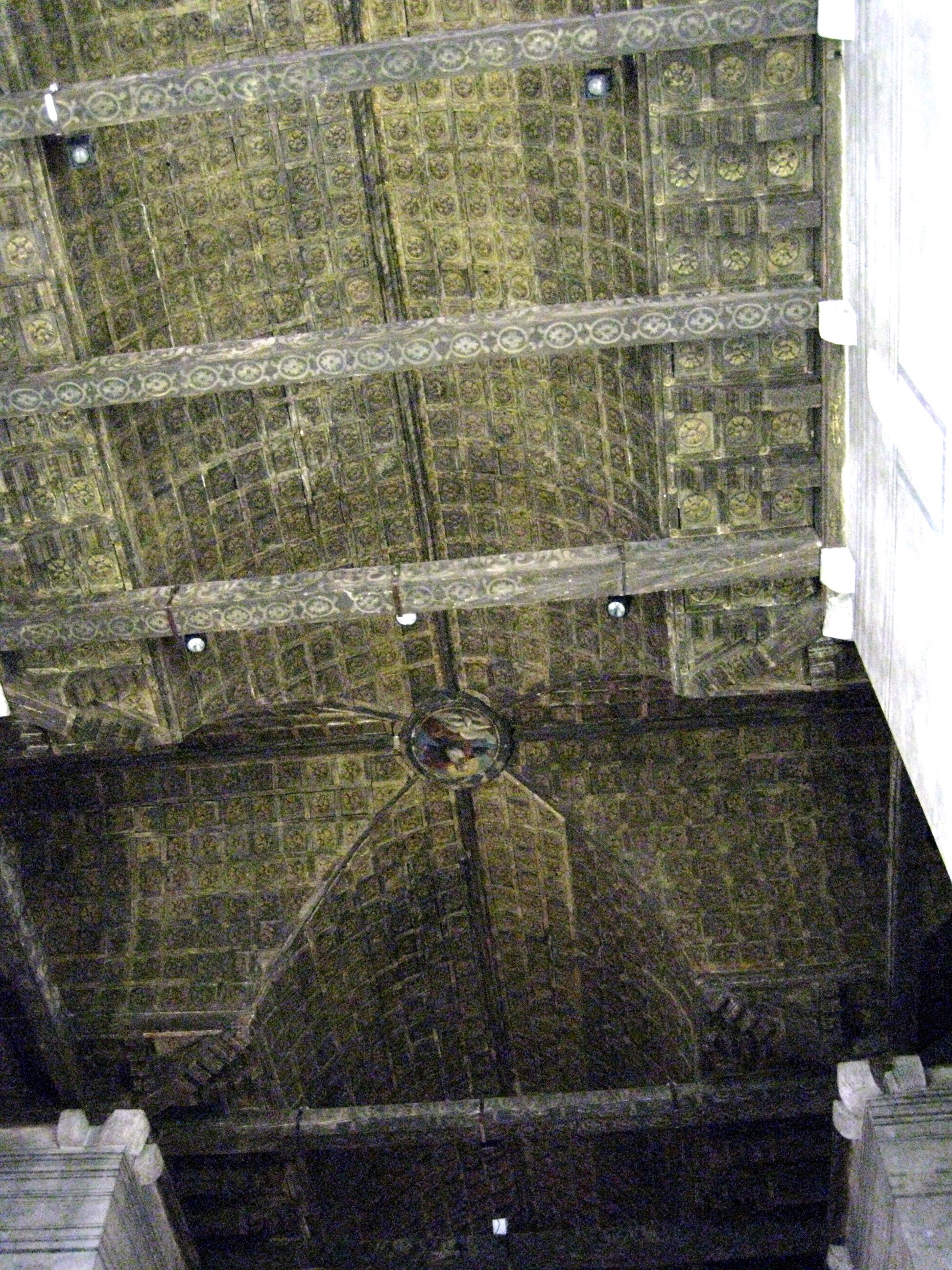 ares.
There
ares.
There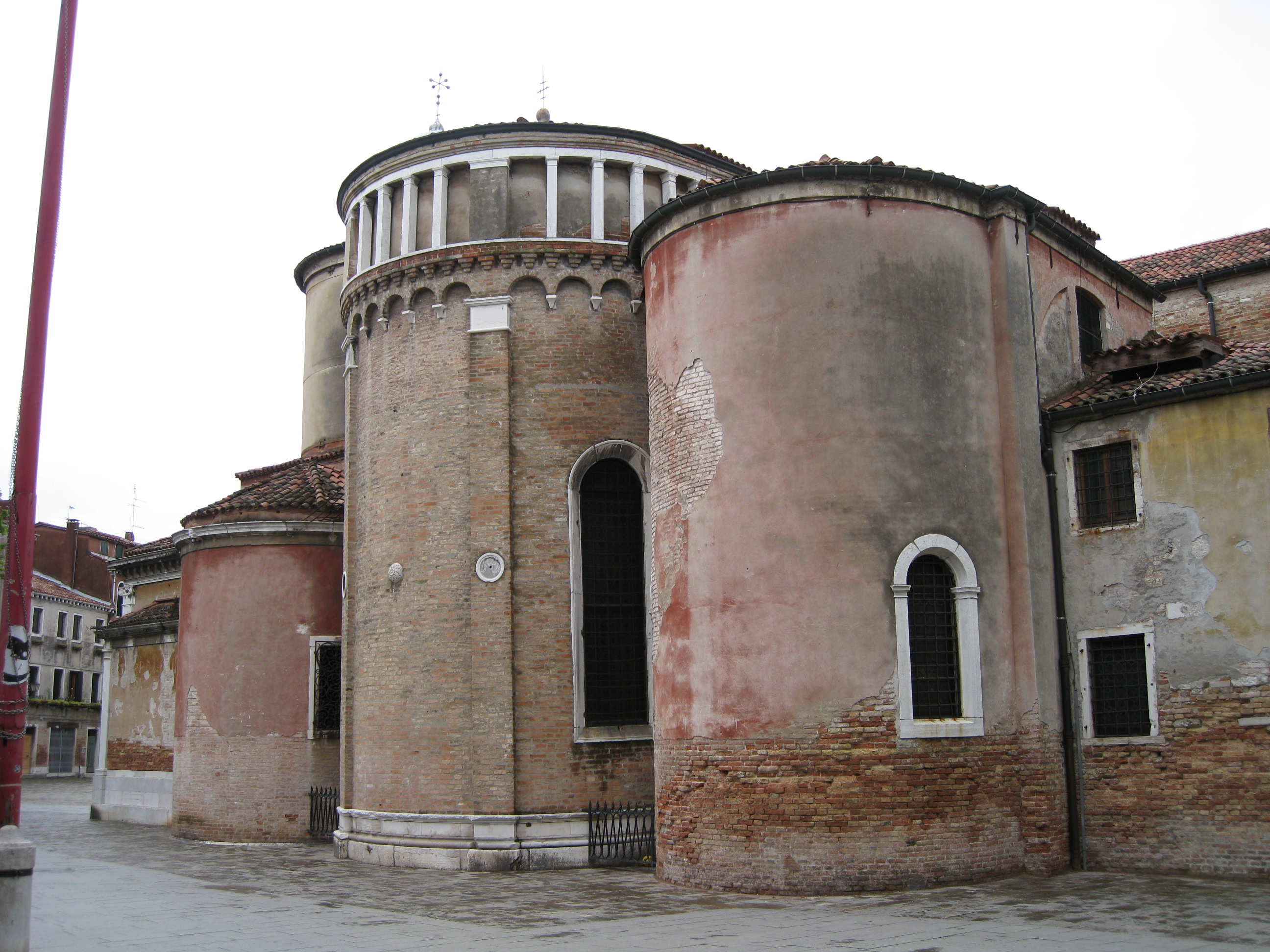 were three adjacent Renaissance Apses. The one
on the right was on the inside was the most Baroque,
more so than the central aspe.
were three adjacent Renaissance Apses. The one
on the right was on the inside was the most Baroque,
more so than the central aspe.

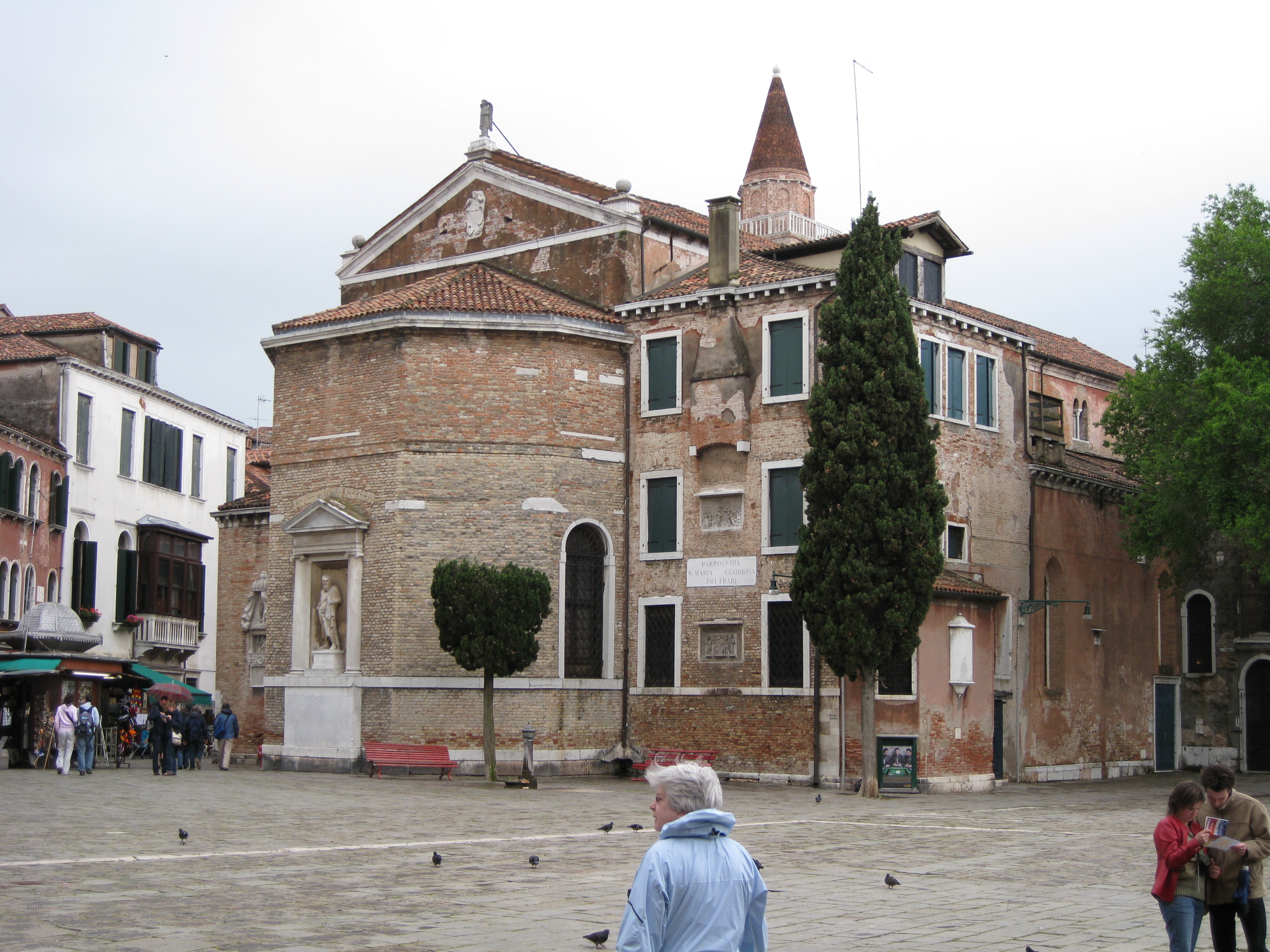

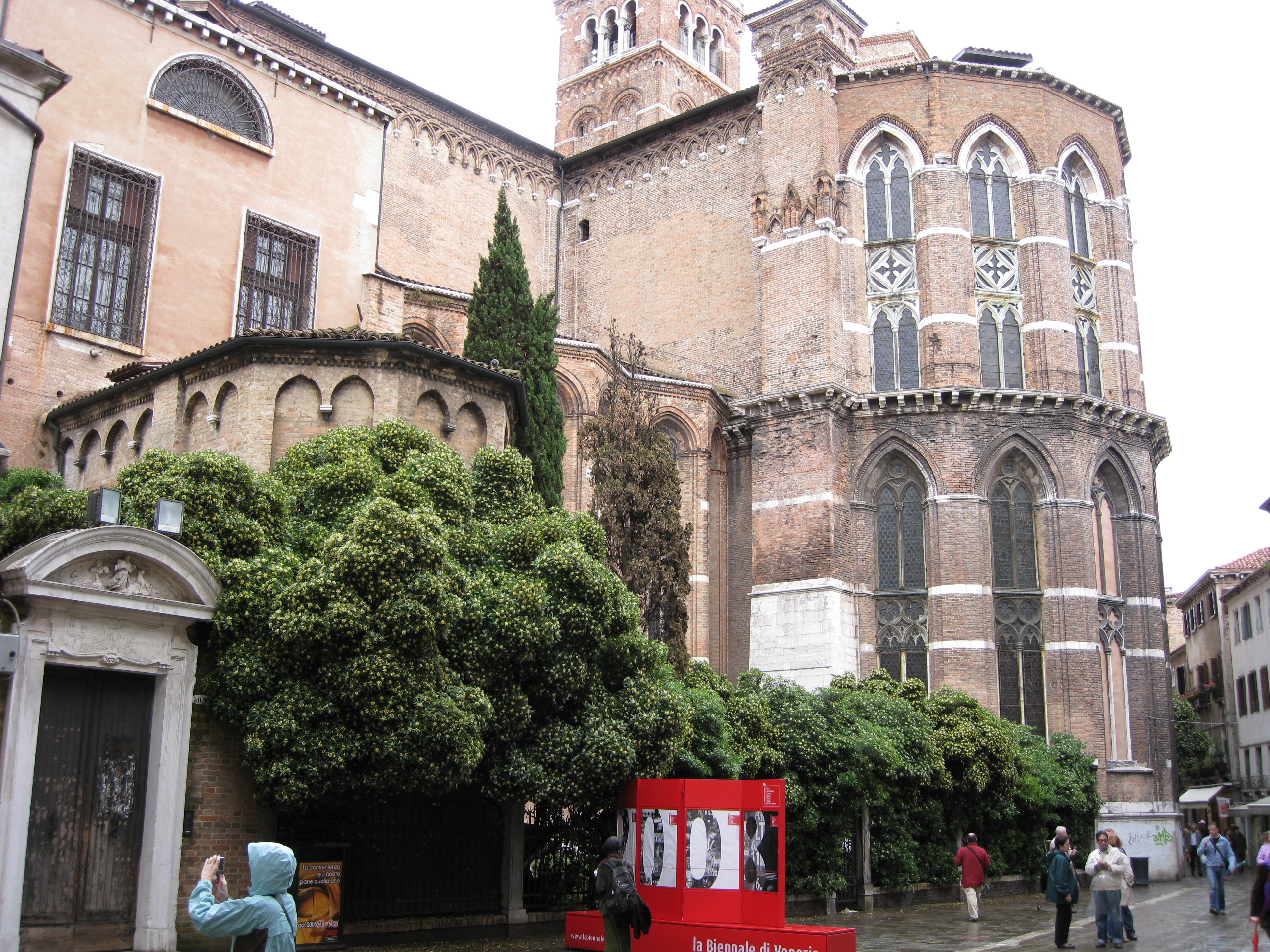 church in Venice next to San Marco.
church in Venice next to San Marco.